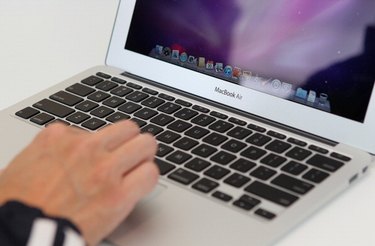
New Mac users may find themselves at a loss when trying to carry out basic tasks that were ordinary on a previous computer. Both operating systems are capable of nearly all of the same functions, however; you just need to learn the simple, fundamental shortcuts and clicks that are different for the Mac OS. With an easily accessed menu, you can create folders, or directories, in any folder on the computer, including the desktop. You can drag or save individual files to the desktop as well.
New Folder
Video of the Day
Step 1
Access the desktop of your computer. You may need to minimize any open program windows or switch to an empty desktop screen if you have the Mac's Spaces feature enabled.
Video of the Day
Step 2
Pres and hold the Ctrl key and click the desktop background. Ctrl + click is the basic command that provides many of the same options as a right-click in Windows.
Step 3
Select "New Folder." A new, untitled folder immediately appears on the desktop. Click the folder and press Return to rename the folder.
Copying Files to Desktop
Step 1
Browse your computer's folders to locate the file you want on the desktop.
Step 2
Click directly on the file. You can select multiple files by holding the Apple/Command key as you click and highlight each individual file.
Step 3
Drag the file(s) to your empty desktop. If the file was located on a flash USB drive or an external hard drive, it will simply create a copy on the desktop — otherwise, the file will be erased from the original location and created as a copy on the desktop.
Saving Files to Desktop
Step 1
Open the program you used to create the file you want to save to your desktop.
Step 2
Open or create the file you want to save. Click the "File" menu in the top left corner of the screen. Click "Save As."
Step 3
Enter a brief, unique name for the file. Click "Desktop" in the left toolbar of the small dialog box. Click "Save" to create the file on your desktop. If you want to download a file, such as a photo or an MP3, from your Internet browser, Ctrl + click directly on the file instead. Select "Save Link As" or "Save Image As," and click "Desktop" and "Save" to create a version of the file on your desktop.